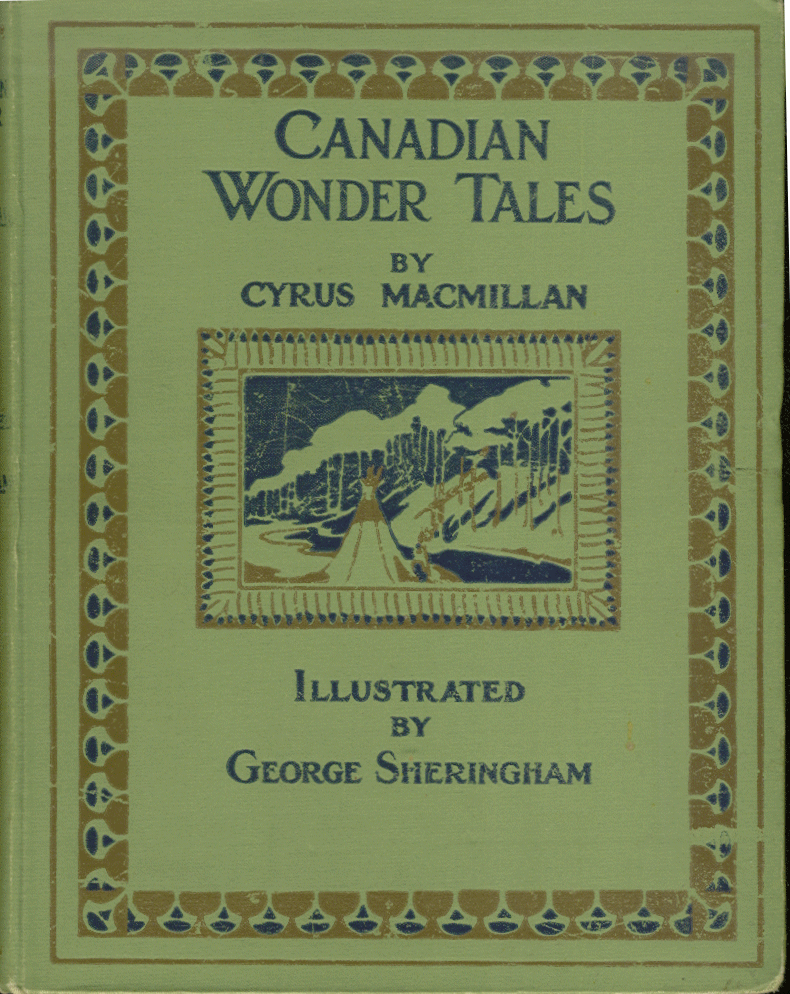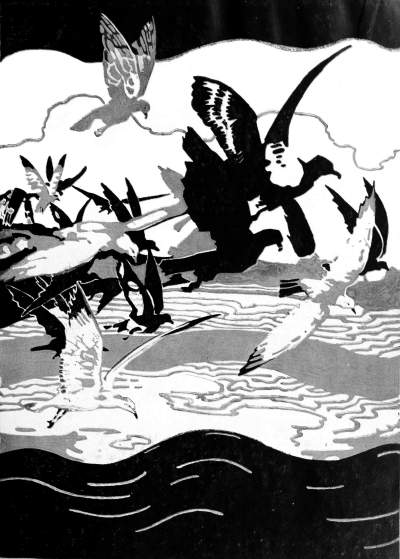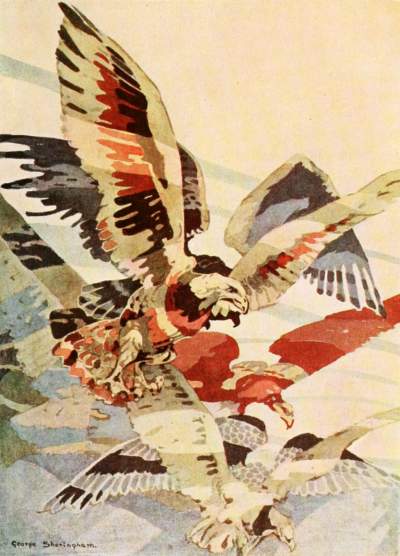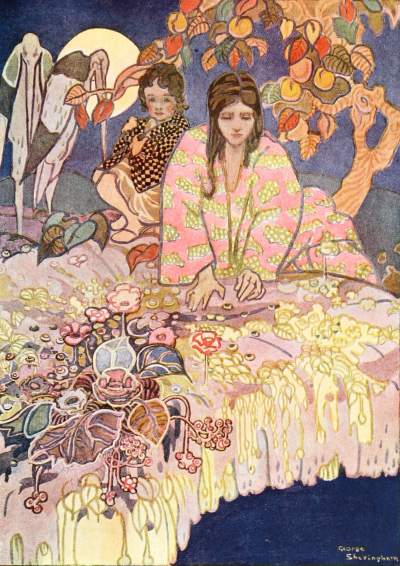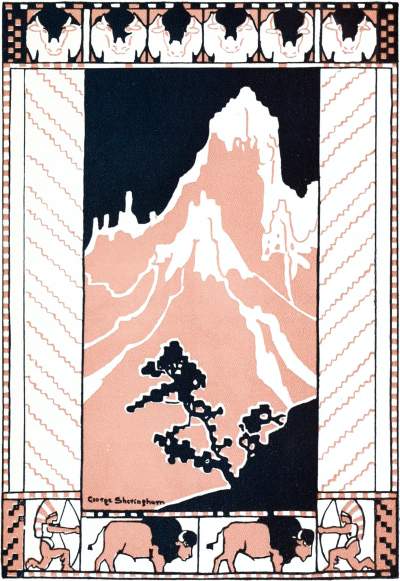© 2014 David Eatock

The Boy’s Own Annual, is a periodical that ran from 1879-1967 comprised of what are deemed the best works submitted to their monthly issues throughout a given year. The publication is aimed at the audience of young boys and the stories range from adventure tales, to slice of life high school sagas, to war stories. The issue that will be given specific focus in this analysis is number 37, comprised of works released between the years of 1914-1915. While the Annual is a revered publication for both its long-standing history and its immense popularity during the time in which it was released, this analysis will not be focused on justifying its relevance or documenting the exhilarating thrills it gave its young readers, instead the aim of this article is to unearth the subtext found within its pages and the way that it strings together a complex narrative that misleads and conditions its readers. While the stories are for the most part well written and on a surface level may seem harmless in regards to the time period in which they were produced, when one looks further they see that the blatant Orientalism, the concerted downplay of the dangers of war and the instillment of nationalistic pride and focus on sports serve the purpose of grooming young boys into willing soldiers.
Orientalism And Linking Narratives
The first aspect of The Annual that will be addressed is the blatant and thorough orientalizing of African cultures and people. The most blatant act of Orientalism appears in the serialized story “In The Power Of The Pygmies” written by Charles Gilson. In this story there are constant depictions of pygmies, which are presumed to be Africans, as savage, uncivilized monsters who pose a great threat to the cordial, English way of living. In the opening segments of the story the pygmies shoot poison darts and gnaw at the wrists of Englishmen, as depicted in the picture, taken from The Annual, below.

It is important to distinguish why a story like this is written, aside from penning a tale for children depicting a culture far removed from their own. In Edward De Said’d famed book, “Orientalism,” he asserts that, “The Orient then seems to be, not an unlimited extension beyond the familiar European world, but rather a closed field, a theatrical stage affixed to Europe” (Edward De Said, Orientalism, 71). In looking at a story such as “In The Power Of The Pygmies” in conjunction with the assertions of De Said we see that what is created for young audiences is a sensationalized, subversive depiction of African cultures, totally created by European powers.
What is important though is less the specific culture being depicted and more so the ethos pervaded by the act of Orientalizing. What stories such as this teach children through their subtext is that foreign cultures are inferior and hostile and that they must be tamed. This thought is depicted further in other articles in The Annual, such as one entitled “Empire Citizens” which beings with a recollection of Rudyard Kipling’s, “The White Man’s Burden” to which the writer responds “But does the Britain complain of this? No; on the contrary, he is proud of it. He loves to think that he is a citizen of no mean empire, that his flag flies on every sea and waves over every continent… To govern and control, wisely and well, a hundred other races.” (The Boy’s Own Annual, Empire Citizens, 36). The firm nationalism promoted by this sentence is problematic in connection to the Orientalism depicted in “In The Power Of The Pygmies” as segments such as the photo depicting the African biting the wrist of the Englishmen pervade the thought that the pygmies are a risk to the civilized English way of life. So, if Britain is as vast and powerful as the quote states, if it is so great that it is entitled to “govern and control, wisely and well, a hundred other races,” than logically the pygmies are in need of European domination and governance.
The Africans, or pygmies as Gilson calls them, were obviously not a civilization that was prominent in the English consciousness in regards to the war of the time. The nation that was more prominent in regards to conflict with Britain in this era would be Germany and The Annual also features unflattering depictions of them. In a scene from the editor of The Annual Arthur Lincoln Haydon’s story “For England And The Right,” a German teacher ordered to teach young English students refers to them as “thick headed, ignorant English boys” (Boy’s Own Annual, 257).
While this is fitting with the adversarial personality of the character, if we link this with “In The Power Of The Pygmies” we can see that a similar idea is being produced. In Gilson’s story the pygmies betray the nationalistic pride that is conveyed in something like the aforementioned “Empire Citizens,” and as such they must be governed and controlled. So, to connect the three narratives in the order of “Empire Citizens,” “In The Power Of The Pygmies,” and lastly, “For England And The Right”; Britain is a great nation that has the right to rule over others and when a nation disrespects or is dangerous to the British way of life they must be controlled. Germany is disrespecting the British way of life, so by the logic put forth by the other two stories Germans must also be controlled. This shows the multi-faceted nature in which these texts convey meaning and as the pygmies are an easy way to imbue otherness through being complete opposites to the British, the acts of Orientalizing help to plant an idea within the readers head so that it can later be manifested in reference to the true militaristic enemy of the time, that being Germany.
Sports And Soldier Grooming
Sports and athleticism are also an interesting facet of The Annual in the way that they are used to shape young boys. For instance in an article entitled “Football And War” the writer states that, “War is the serious, vital thing of which all our games of antagonstics are but imitations: imitations designed in part by way of amusement and recreation, but also essentially as part of the process for preparing the individual, as a mode of training and hardening him, for the real, grim business of warfare,” (Boy’s Own Annual, 95). This quote paired with the incessant focus on sports within The Annual shows how the periodical did not disguise its use of sports as institutionalized imperialism. Another quote to give further depth to the sports commentary can be found in the article “My Views On Halfback Play” where the writer states that “As in the case of most games, to achieve success a start must be made early.” (Boy’s Own Annual, 127).
If we link the messages of these two texts we see what is being conveyed is that children should start playing sports early and as such they should also start their development as soldiers early, if sports are, as the text states, preparation for the business of warfare. For further insight into the claims of propaganda in stories such as this, in a book entitled “The First World War” written by Ian Mackinnon and David Bell they state that countries would “self-mobilize” and that they would often run absurdly patriotic stories (Mackinnon, Bell, Ian, David The First World War, 29). Sports stories such as these are a example of the absurd patriotism noted in this book, as what are often times seen as mere leisurely past-times are being manipulated into war grooming tools. As such, it is not out of the question, in fact, it is probable to think that most of the sports stories featured in The Annual at this time were serving the purpose explicitly stated in the story, “Football And War.”
War Danger Minimized And Public Perception As An Issue
Another area of particular intrigue is how war is depicted in The Annual, that being, in a way where the dangers of war are greatly minimized by the stories and articles. For example, in an article entitled “Piloting, The Royal Flying Corps” a great deal of time is devoted to qualities of the pilots such as the amount of honor they receive or the amount of pay and the article even goes so far as to explicitly state that the pilots do not have much of a role in fighting and as such they are not in particular danger (Boy’s Own Annual, 33-36). The one line in the article that does insinuate the danger for war pilots is at the very end of the article when the writer says, “The toll of the reaper is heavy,” but this line is immediately followed by “There will be many gaps to fill in the ranks of those who have acquitted themselves so nobly,” (Boy’s Own Annual, 33-36). As such we see the danger here is only present in order to show that it is essential that more young people enlist.
The concept of danger, or lacktherof, is also spearheaded by the aforementioned “In The Power Of The Pygmies” as though the Englishmen are faced with innumerable conflicts in the wake of being captures by pygmies, they aways resolve said conflicts with ease and there is never a point where it does not feel like they will prevail. For instance, after an Englishmen escapes his captives the pygmies are shot down with ease (In The Power Of The Pygmies, 208, 206-216).
Further downplay of danger is pervaded in the images of the text, most notably a photograph of English soldiers drinking tea in a German dug out.

While in a publication printed for young boys photos of atrocities would of course not be featured, this particular image portrays the war as something leisurely and altogether safe. This is absurdly misleading and when paired with other articles written in The Annual it puts forth a dangerously deceptive message to its readers.
Though perhaps not intentionally misleading, there are also problems created through how readers and reviewers document works such as The Annual. For example, in a book called “Take A Cold Tub, Sir!” former editor of The Annual Jack Cox repeats phrases such as “The vigorous and racy tales delighted many generations” continually (Cox, Jack Take A Cold Tub, Sir! 34). In another book written by Dennis Butts and Pat Garret entitled “From The Dairyman’s Daughter To Worrals of the WAAF,” The Boy’s Own Annual is chronicled in speaking of its readership, the multitude of audiences in which its content could reach and the general popularity of the text (Butts, Garret, Dennis, Pat, From The Dairyman’s Daughter To Worrals Of The WAAF, 133-145) and also a Spectator review of The Annual from 1889 only states that it contains thrilling adventure stories that could entertain either boys or girls (Anon, The Girl’s Own Annual And The Boy’s Own Annual, 669).
The issue with reviews and documentation such as this is that they ignore the ramifications that certain stories and articles have on the reader and on culture. Furthermore, they pervade the sense that the content of stories in The Annual such as “In The Power The Pygmies” are without subtext or cultural commentary, rather they are just vapid, exciting entertainment for one to read on their spare time. This is a dangerous practice as it should be well known that there is always thematic relevance and undertones to stories and this is perhaps a reason for the power of war time propaganda and even propaganda of our own time. Reading is seen as a fun distraction, especially when stories are tailor made for young boys and as such the messages imbued within stories containing blatant Orientalism, misrepresentations of war and sports articles with clear, ulterior motives, such as those contained within The Boy’s Own Annual, are ignored by the public as their effects rub off on the youthful readers.
Bibliography
Butts, Dennis and Pat Garret. From The Dairyman’s Daughter To Worrals of the WAAF: The Religious Tract Society, Lutterworth Press and Children’s Literature. Cambridge: Lutterworth 2006. 137-144. Print
Cawood, Ian, and David Mckinnon Bell The First World War. London: Routledge, 2001. Print
Cox, Jack. Take A Cold Tub, Sir!: The Story Of The Boy’s Own Paper. Guildford, Surrey, England: Lutterworth, 1982. Print
Said, Edward W. Orientalism. New York: Vintage, 1979. Print.
Haydon, Arthur Lincoln, The Boy’s Own Annual. 1st ed Vol. 37. London: Boy’s Own Paper Office, 1915. Print.
Anon: The Girl’s Own Annual And The Boy’s Own Annual. The Spectator 16 Nov. 1889: 669, Google Books Database
































